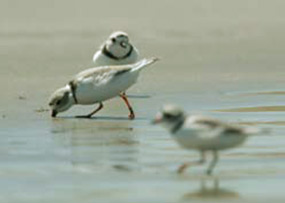Coastal Sensitivity to Sea Level Rise
Appendix 1: State and Local Information
Related Links
U.S. Global Change Research Program
Background Documents Supporting Climate Change Science Program Synthesis and Assessment Product 4.1
Other EPA-sponsored Climate Change Science Program Synthesis and Assessment Reports
The U.S. Environmental Protection Agency (EPA), in collaboration with the U.S. Geological Survey (USGS) and the National Oceanic and Atmospheric Administration (NOAA), has released a report that discusses the impacts of sea level rise on the physical characteristics of the coast, on coastal communities, and the habitats that depend on them. The report, Coastal Sensitivity to sea level Rise: A Focus on the Mid-Atlantic Region examines multiple opportunities for governments and coastal communities to plan for and adapt to rising sea levels.
Download specific sections from Appendix 1: State and Local Information:
- Section A: Long Island (8 pp, 773K)
- Section B: New York Metropolitan Area (3 pp, 338K)
- Section C: New Jersey Shore (5 pp, 720K)
- Section D: Delaware Estuary (7 pp, 580K)
- Section E: Atlantic Coast of Virginia, Maryland, and Delaware (3 pp, 369K)
- Section F: Chesapeake Bay (15 pp, 2.1MB)
- Section G: North Carolina (10 pp, 828K)
Download specific text boxes from Appendix 1:
- Box 1: Effects on Piping Plover (1 pp, 637K)
- Box 2: Shore Protection on Long Beach Island (1 pp, 552K)
- Box 3: Horseshoe Crabs and Estuarine Beaches (1 pp, 470K)
- Box 4: The Gibbstown Levee, New Jersey (1 pp, 87K)
- Box 5: Elevating Ocean City (Maryland) as Sea Level Rises (1 pp, 69K)
- Box 6: Planning for Sea Level Rise in Baltimore (2 pp, 1.3MB)
- Box 7: The Diamondback Terrapin (1 pp, 519K)
- Box 8: Vulnerability of the Albemarle-Pamlico Peninsula (1 pp, 89K)
- Box 9: Reintroduced Population of Red Wolves in North Carolina (1 pp, 517K)
Appendix 1 discusses many of the species that depend on potentially vulnerable habitat in specific estuaries, providing local elaboration of the general issues examined in Chapter 5. It also describes key statutes, regulations, and other policies that currently define how state and local governments are responding to sea level rise, providing support for some of the observations made in Part III.
This set of information was not developed as a quantitative nor analytical assessment and therefore is not intended as a complete or authoritative basis for decision making; rather, it is a starting point for those seeking to discuss local impacts and to examine the types of decisions and potential policy responses related to sea level rise.
 The subsections concerning species and habitat are largely derived from a U.S. EPA report developed in support of this Synthesis and Assessment Product (U.S. EPA, 2008), with additional input from stakeholders as well as expert and public reviewers. The appendix includes text boxes on the vulnerability of piping plover, horseshoe crab, diamondback terrapin, red wolf, That report synthesized what peer-reviewed literature was available, and augmented that information with reports by organizations that manage the habitats under discussion, databases, and direct observations by experts in the field. The sections that concern state and local policies are based on statutes, regulations, and other official documents published by state and local governments.
The subsections concerning species and habitat are largely derived from a U.S. EPA report developed in support of this Synthesis and Assessment Product (U.S. EPA, 2008), with additional input from stakeholders as well as expert and public reviewers. The appendix includes text boxes on the vulnerability of piping plover, horseshoe crab, diamondback terrapin, red wolf, That report synthesized what peer-reviewed literature was available, and augmented that information with reports by organizations that manage the habitats under discussion, databases, and direct observations by experts in the field. The sections that concern state and local policies are based on statutes, regulations, and other official documents published by state and local governments.
- For previous reports focused on the implications of rising sea level, go to the Climate Change Site’s Sea Level Rise Reports section.
- Request a hard copy of the report
 .
.

 Part IV: National Implications and Science Strategy
Part IV: National Implications and Science Strategy